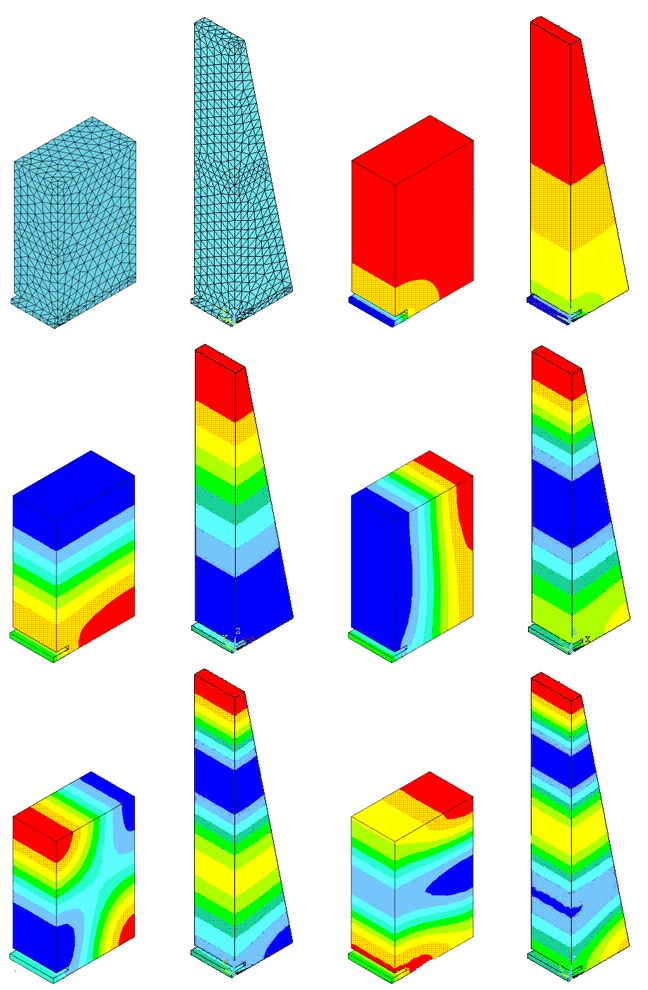We do not know the taper of the line so cannot directy calculate the expected resonances, but that LF bump in the impedance, is about the right place for a resonably well damped TL resonance. One would expect all the higher ones to be suppressed by the damping and the 1st undesirable harmonic killed by th edriver offset.
dave
dave
i do not think it is tapered, i think it had straight walls, i am not sure if it is a transmission line at all, but if any tall and vented enclosure is a mltl then this should fall into that category too?
is there any rule of thumbs here when a vented box goes mltl, is there any ratio of enclosure height/width/depth that can be expressed?
is there any rule of thumbs here when a vented box goes mltl, is there any ratio of enclosure height/width/depth that can be expressed?
...but if any tall and vented enclosure is a mltl then this should fall into that category too?
Thay are to some extent. You can fight it, but i don’t see any point.
dave
Thay are to some extent. You can fight it, but i don’t see any point.
dave
to bad then that not many box calculation softwares take this in to account
 i thought a vented box where a vented box regardless of its shape
i thought a vented box where a vented box regardless of its shapeAll the BR calculations assume a sorta cube-like box ratios — ie not too far apart. Proper TL modeling did not come until late 1999, full understanding of the ML-TL was not understood until a couple years later.
You often here the maxim, “you need to measure the impedance because the modeled vent is probably not quite right”. An ML-TL is usually tuned lower than the equivalant volume, so manufacturers woud do this for their towers, but other optimization factors were not likely takenadvantage of.
Compilation of MJK ANSYS simulation of BR vrs ML-Voigt (an ML-TL variant).

dave
You often here the maxim, “you need to measure the impedance because the modeled vent is probably not quite right”. An ML-TL is usually tuned lower than the equivalant volume, so manufacturers woud do this for their towers, but other optimization factors were not likely takenadvantage of.
Compilation of MJK ANSYS simulation of BR vrs ML-Voigt (an ML-TL variant).
dave
I'm going to jump in here because I feel like the original question wasn't answered.
Research floor bounce and boundary reinforcement. Ports down low are good. woofers down low are better.
The higher your woofers are from the floor the worse the floor bounce cancellation will be. You cannot EQ that into submission. I've tried.
Once you hear full range mid/bass that isn't stand mounted and accentuated with a sub you'll know what I'm talking about. Get yourself a big woofer near the floor.
Research floor bounce and boundary reinforcement. Ports down low are good. woofers down low are better.
The higher your woofers are from the floor the worse the floor bounce cancellation will be. You cannot EQ that into submission. I've tried.
Once you hear full range mid/bass that isn't stand mounted and accentuated with a sub you'll know what I'm talking about. Get yourself a big woofer near the floor.
All the BR calculations assume a sorta cube-like box ratios — ie not too far apart. Proper TL modeling did not come until late 1999, full understanding of the ML-TL was not understood until a couple years later.
You often here the maxim, “you need to measure the impedance because the modeled vent is probably not quite right”. An ML-TL is usually tuned lower than the equivalant volume, so manufacturers woud do this for their towers, but other optimization factors were not likely takenadvantage of.
Compilation of MJK ANSYS simulation of BR vrs ML-Voigt (an ML-TL variant).

dave
i really do not understand what the graph shows but i think i need to learn a software that can simulate boxes in a more realistic way, hornresp seems to be very popular among true enthusiasts
I'm going to jump in here because I feel like the original question wasn't answered.
Research floor bounce and boundary reinforcement. Ports down low are good. woofers down low are better.
The higher your woofers are from the floor the worse the floor bounce cancellation will be. You cannot EQ that into submission. I've tried.
Once you hear full range mid/bass that isn't stand mounted and accentuated with a sub you'll know what I'm talking about. Get yourself a big woofer near the floor.
that is true, but having the woofers near the floor also worsen floor-ceiling room resonance, question then is which one is worse?
to me best sound comes from listening in the near field and having the speakers and listening seat far from room boundaries, this setup minimizes the sonic imprint of the room, but it is very impractical and not a long term solution in my home
- Status
- This old topic is closed. If you want to reopen this topic, contact a moderator using the "Report Post" button.
- Home
- Loudspeakers
- Multi-Way
- Port near floor best for good/best room integration?